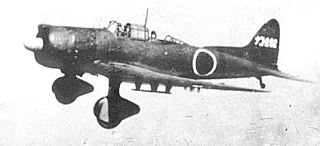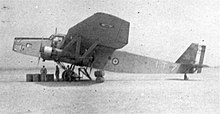
Aermacchi was an Italian aircraft manufacturer. Formerly known as Aeronautica Macchi, the company was founded in 1912 by Giulio Macchi at Varese in north-western Lombardy as Nieuport-Macchi, to build Nieuport monoplanes under licence for the Italian military. With a factory located on the shores of Lake Varese, the firm originally manufactured a series of Nieuport designs, as well as seaplanes.

The Nakajima Aircraft Company was a prominent Japanese aircraft manufacturer and aviation engine manufacturer throughout World War II. It continues as the car and aircraft manufacturer Subaru.

Aichi Kokuki KK was a Japanese aerospace manufacturer which produced several designs for the Imperial Japanese Navy. After the war, the company was reorganized as Aichi Machine Industry Co., Ltd (愛知機械工業) where they made small kei cars until 1966 when they were integrated into Nissan and developed the Nissan Sunny and Nissan Vanette.

Caproni, also known as Società de Agostini e Caproni and Società Caproni e Comitti, was an Italian aircraft manufacturer. Its main base of operations was at Taliedo, near Linate Airport, on the outskirts of Milan.
The Bréguet 690 and its derivatives were a series of light twin-engine ground-attack aircraft that were used by the French Air Force in World War II. The aircraft was intended to be easy to maintain, forgiving to fly, and capable of 480 km/h (300 mph) at 4,000 m (13,000 ft). The type's sturdy construction was frequently demonstrated and the armament was effective. French rearmament began two years later than that in Britain and none of these aircraft were available in sufficient numbers to make a difference in 1940.

Farman Aviation Works was a French aircraft company founded and run by the brothers Richard, Henri, and Maurice Farman. They designed and constructed aircraft and engines from 1908 until 1936; during the French nationalization and rationalization of its aeronautical industry, Farman's assets were assigned to the Société Nationale de Constructions Aéronautiques du Centre (SNCAC).

The Free French Air Forces were the air arm of the Free French Forces in the Second World War, created by Charles de Gaulle in 1940. The designation ceased to exist in 1943 when the Free French Forces merged with General Giraud's forces. The name was still in common use however, until the liberation of France in 1944, when they became the French Air Army. Martial Henri Valin commanded them from 1941 to 1944, then stayed on to command the Air Army.
The Vichy French Air Force, usually referred to as the Air Force of Vichy or Armistice Air Force for clarity, was the aerial branch of the Armistice Army of Vichy France established in the aftermath of the Fall of France in June 1940. The Vichy French Air Force existed between December 1940 and December 1942 and largely served to defend Vichy French territories abroad.
Chantiers Aéro-Maritimes de la Seine (CAMS) was a French manufacturer of flying boats, founded in Saint-Ouen in November 1920 by Lawrence Santoni.



















